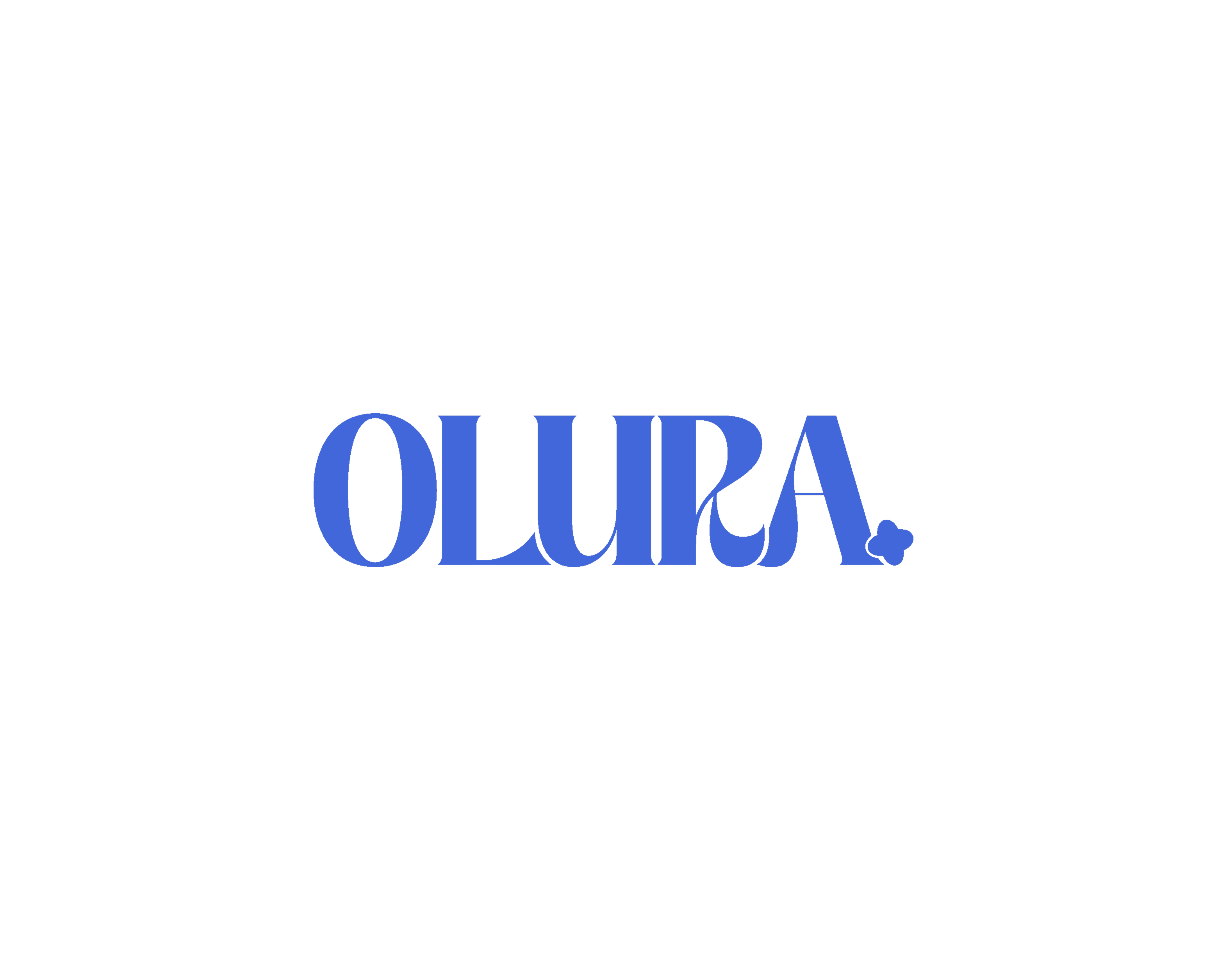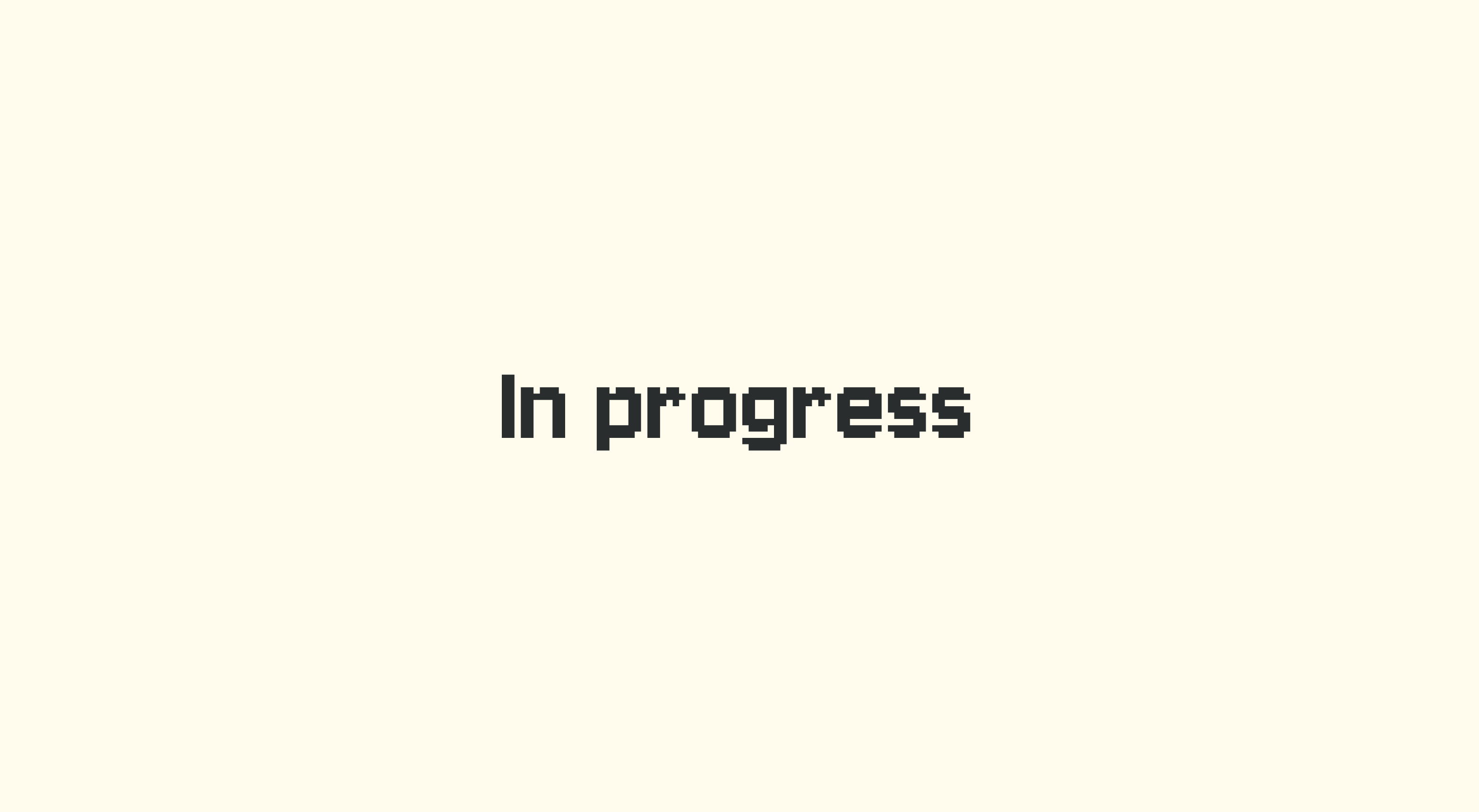Plan-T
.png)
Overview
In the fast-paced landscaping industry, many small and mid-sized businesses struggle with plant waste, high costs, and disorganized workflows. During a 13-week project at Langara College, our team of designers and developers worked together to create a web-based system that helps landscaping companies manage their inventory, cut waste, improve client satisfaction, and run their operations more efficiently.
My Role:
As a UX/UI Designer, I participated in all aspects of the project from UX research, competitive analysis, and user personas and branding assets for promotional materials.
In the product design, I worked on user flows, wireframes, and high-fidelity screens, specifically designing the dashboard, notifications page, and contributing to the design system.
Problem
Landscaping businesses struggle with Unclear client requests and visuals Inaccurate pricing and poor inventory tracking Seasonal fluctuations in plant costs Disjointed procurement and project planning. These issues create delays, resource waste, and ultimately, dissatisfied clients. Our mission was to dig into these root problems and create a centralized, smart solution.
Research
To validate our assumptions, we immersed ourselves in the landscaping ecosystem through interviews and secondary research. We spoke with project managers, sales assistants, and field staff to understand their pain points.
Key Insights:
- Inventory tracking is mostly manual and outdated
- Clients often don’t know what they want until they see it, leading to scope creep.
- Pricing is difficult to calculate due to seasonal variation.
.jpg)
.jpg)
Knowing Our Competitors
We analyzed industry giants and smaller landscape management tools.

Solution
Based on our research, we designed PlanT, a modular platform to help landscaping companies manage their operations more efficiently:
- Inventory & Procurement Management: Track stock in real time, monitor shortages, and generate purchase orders based on actual needs to reduce waste and costs.
- Client Planning: Create personalized project plans tailored to each client’s requirements for more accurate and satisfying results.
- Market Integration & Cost Estimation: Compare live plant prices and calculate project costs quickly to make informed decisions.
- Custom Plant Packages: Build flexible plant packages that highlight high-stock or high-value plants for clients.
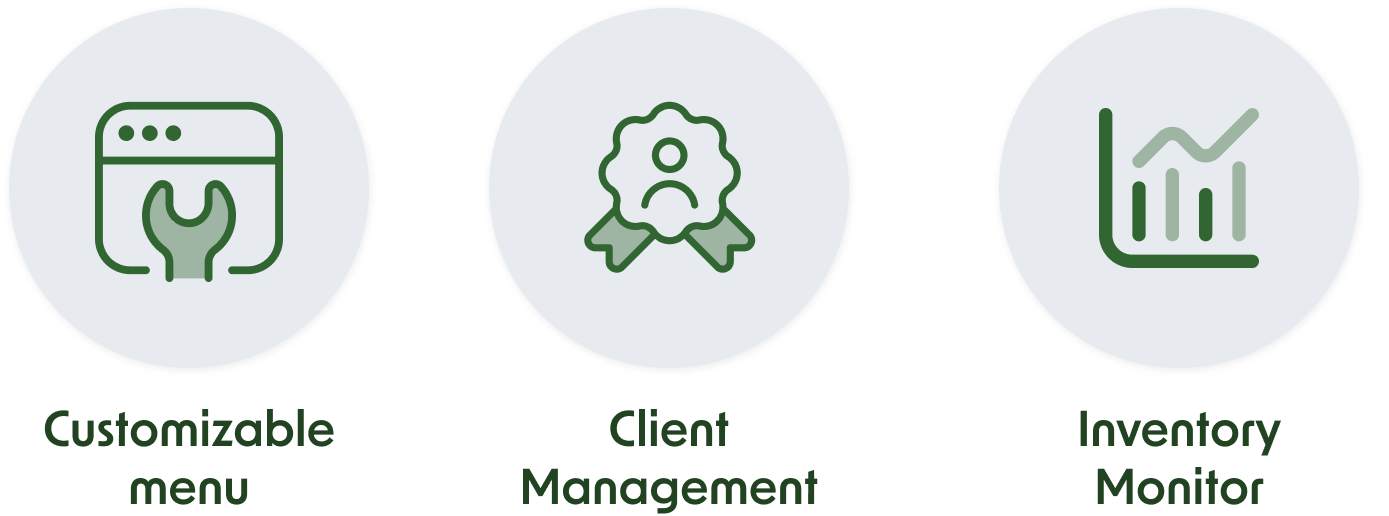
Link to the full userflow here
usability & testing
We conducted usability testing to evaluate how users interact with PlanT, focusing on efficiency, clarity, and ease of use. The goal was to ensure that essential tasks like managing inventory, tracking orders, and handling client requests could be completed quickly and intuitively.
I designed the dashboard and notifications page, two key interfaces that help users manage daily operations efficiently. I also designed the SignUp/Sign In page.
Dashboard Design:
- First Iteration: The initial layout displayed inventory, tasks, and client projects, but users found it cluttered and struggled to quickly identify critical information.
- Final Iteration: I reorganized the layout to prioritize key metrics, added visual hierarchy, and refined element placement based on feedback, making stock levels, pending orders, and workflow status immediately clear.
.jpg)
Notifications Page:
- First Iteration: All updates were listed in one feed, which was overwhelming and made it easy for important alerts to be missed.
- Final Iteration: I added icons to indicate new stock, low stock, or expiring items, and color-coded notifications to help users quickly identify what needs attention. These changes made updates more scannable and actionable.
These iterations improved usability, simplified complex workflows, and created a visually clear experience for landscaping professionals.
.jpg)
Design & Component
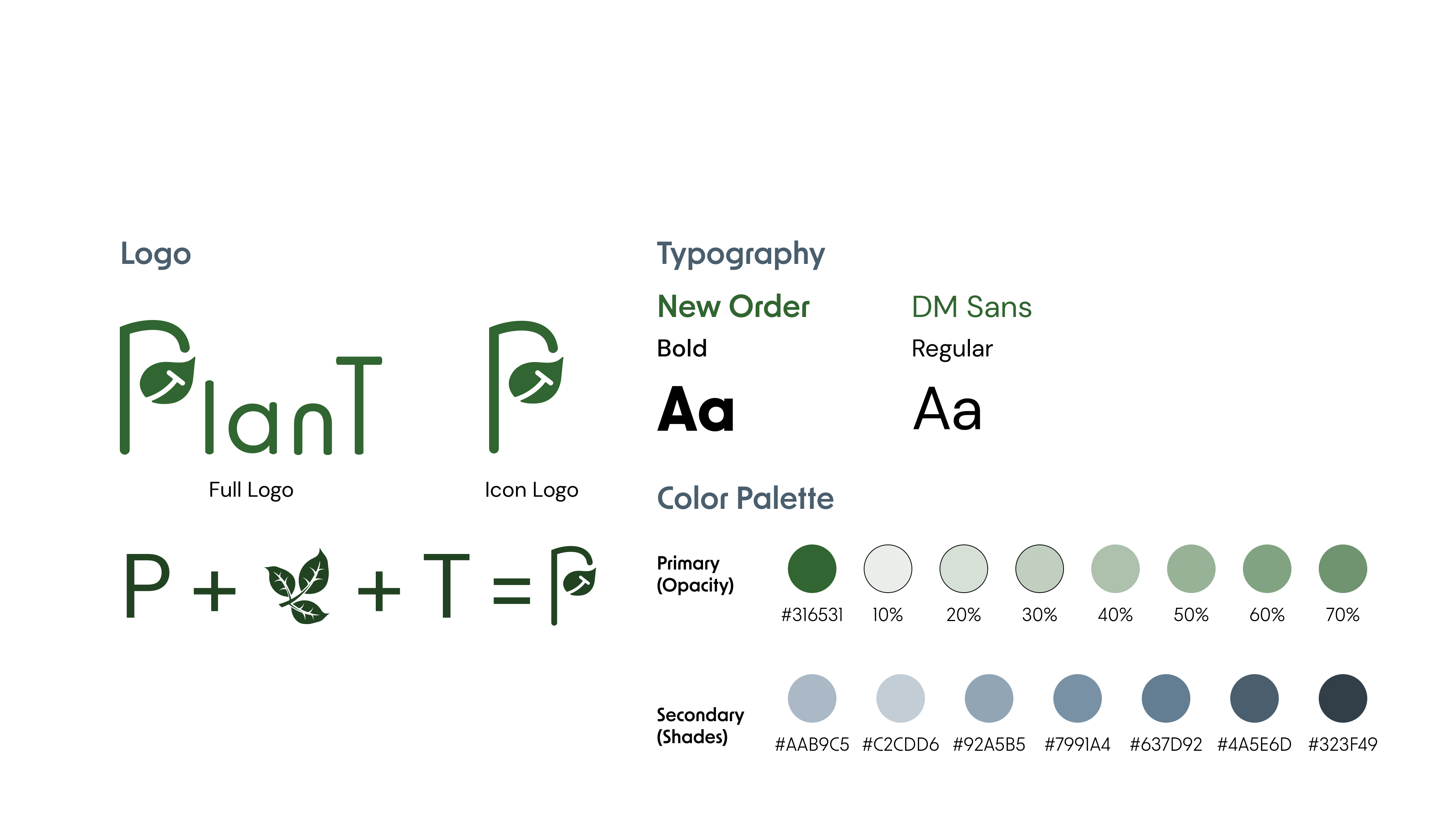
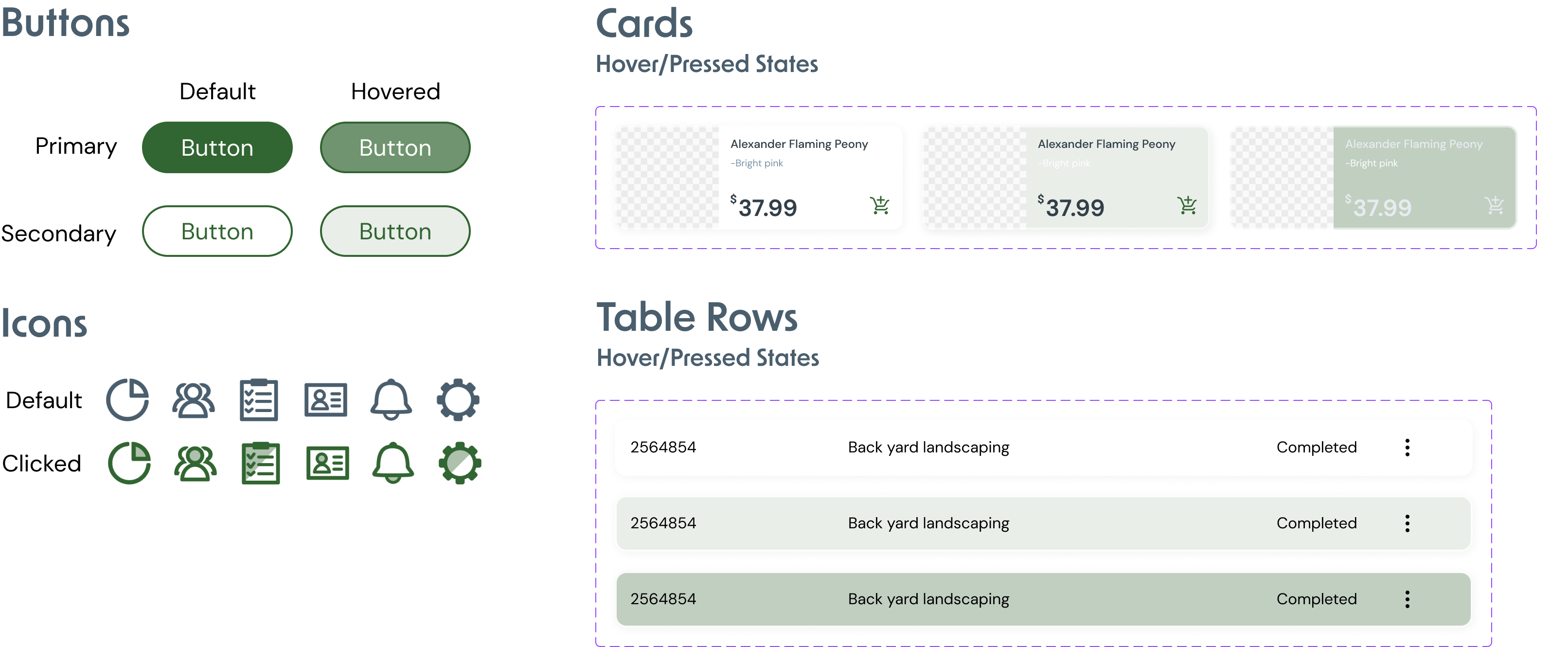
Final designs
.jpg)
.jpg)
